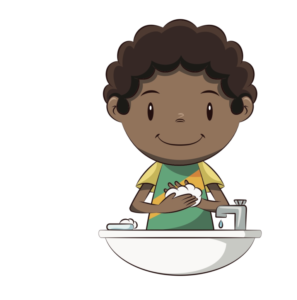Doctors’ Notes
BackReturning to Child Care Under “Yellow” Status
With Western Pennsylvania set to enter Pennsylvania’s “Yellow Zone,” and with some businesses starting to open up, a question we’re hearing from LOTS of parents is, How do I know when it’s safe to let my child return to child care?
 As with everything else about this pandemic, there’s no previous experience to fall back on, and we’re learning as we go. The best we can do is to look at the most current data available, think strategically, weight risks versus benefits, make the best decision we can at any given time, and then re-evaluate when data or circumstances change.
As with everything else about this pandemic, there’s no previous experience to fall back on, and we’re learning as we go. The best we can do is to look at the most current data available, think strategically, weight risks versus benefits, make the best decision we can at any given time, and then re-evaluate when data or circumstances change.
So what does that mean for parents trying to decide about child care?
Our current knowledge of COVID-19 suggests that children are far less often affected, and less severely affected, by this virus than are adults. (There have been a few rare cases of more severe illness, but those are the exception to the rule.) Children can, however, carry the virus to others, even while they may have little or no symptoms. We also know that many parents may soon be required to — and that most need to — return to work. We’ve all learned that working from home with “help” from children is hard, and when parents’ work is outside of the home, children need somewhere safe, nurturing, and educational to stay. That means we need high-quality and safe child care.
The CDC has created guidelines for child care centers to use when planning how best to re-open. These are guidelines, not rules, recognizing that child care providers come in all sorts of shapes and sizes with a range of capacities. The guidelines cover the basic areas of risk reduction that you as a parent want to think about as you make this decision.
You should talk with your child care provider, and ask them how they plan to address each of these categories of risk reduction.
Drop-Off & Pick Up
There are multiple options, but they may include:
• Staggered drop-off and pick-up time slots
• Marked waiting spaces at the entry to keep people at least 6 feet apart
• Limiting entry into the facility to children and staff
• Temperature screening of children (and parent,s if they’re entering the facility)
• Hand hygiene upon entry to the facility
Staff Precautions
There are multiple options, but they may include:
• Monitoring staff for symptoms, including checking temperatures,
• Staff changes of outer clothing during the day
• Wearing masks
Child Precautions
There are multiple considerations you’ll want to know:
• Will children be required to wear masks?
• What are the hand washing plans for children?
• How will sleeping cots/cribs be placed?
• What are the mealtime precautions?
• What happens if a child develops signs of illness?
• When is a child allowed to return to care after being sick?
Facility & Supply Management
There are multiple considerations you’ll want to know:
• How are group or “circle” times managed?
• Are classes sharing spaces (playgrounds, dining spaces, etc)?
• How will toys and books and playgrounds be cleaned?
• How will classrooms, hallways, bathrooms, common areas be cleaned?
• What happens if there’s a known case of COVID-19 within the facility’s staff, children, or parents?
In the end, after considering all of this guidance, the decision ultimately lies with each family.
If you’re comfortable with how your child care provider is addressing each of these issues, and the benefits of returning to work and child care (economic, social, educational benefits for you and your entire family) outweigh the risks, then back to work and childcare you all go. If you’re not comfortable with the strategies your child care provider plans to use, or feel that the benefits do not outweigh the risks, then you may have to look for other options.
Dr. Springer, a Shareholder in the practice, has been a Kids Plus Provider since 2003.